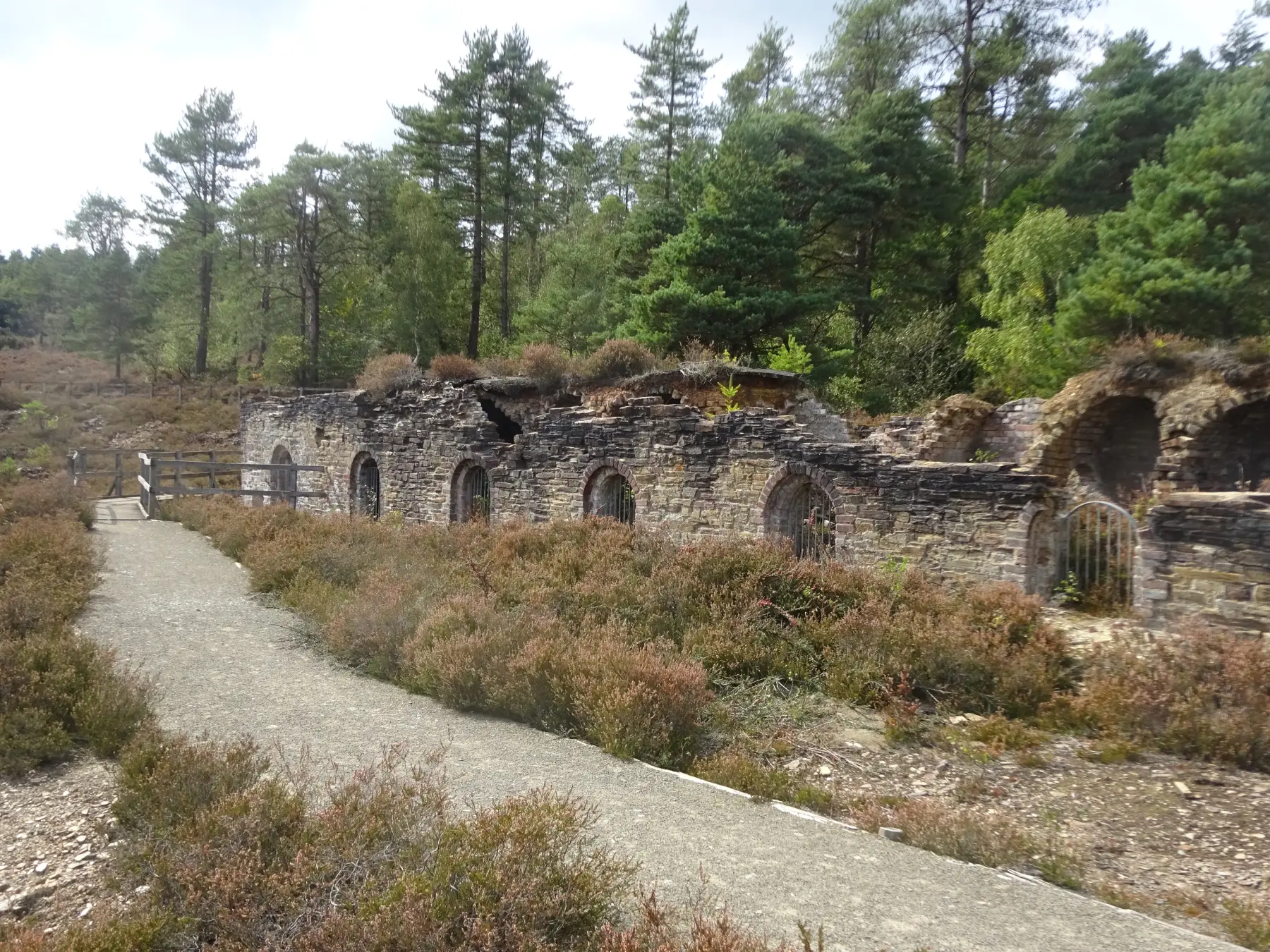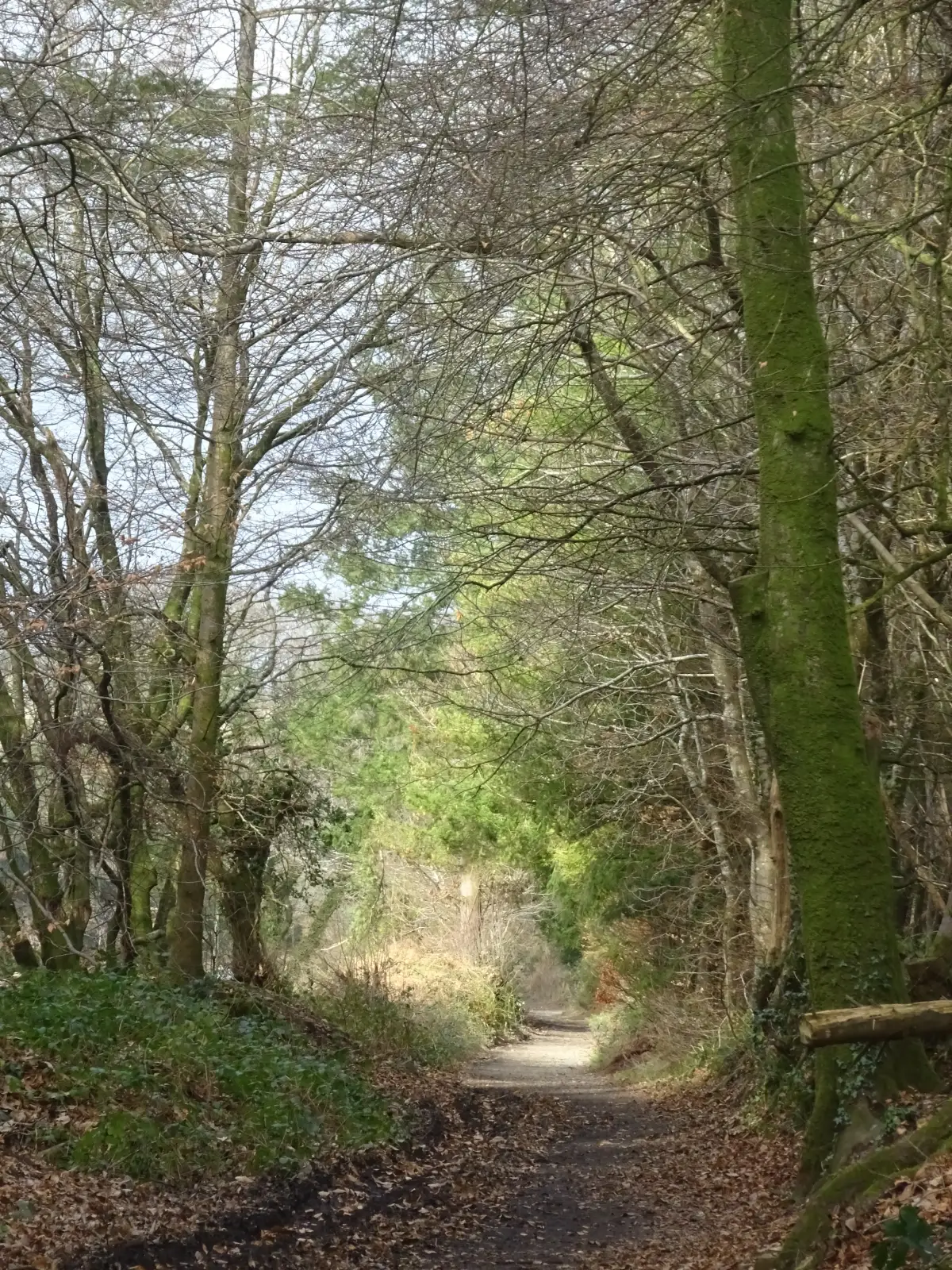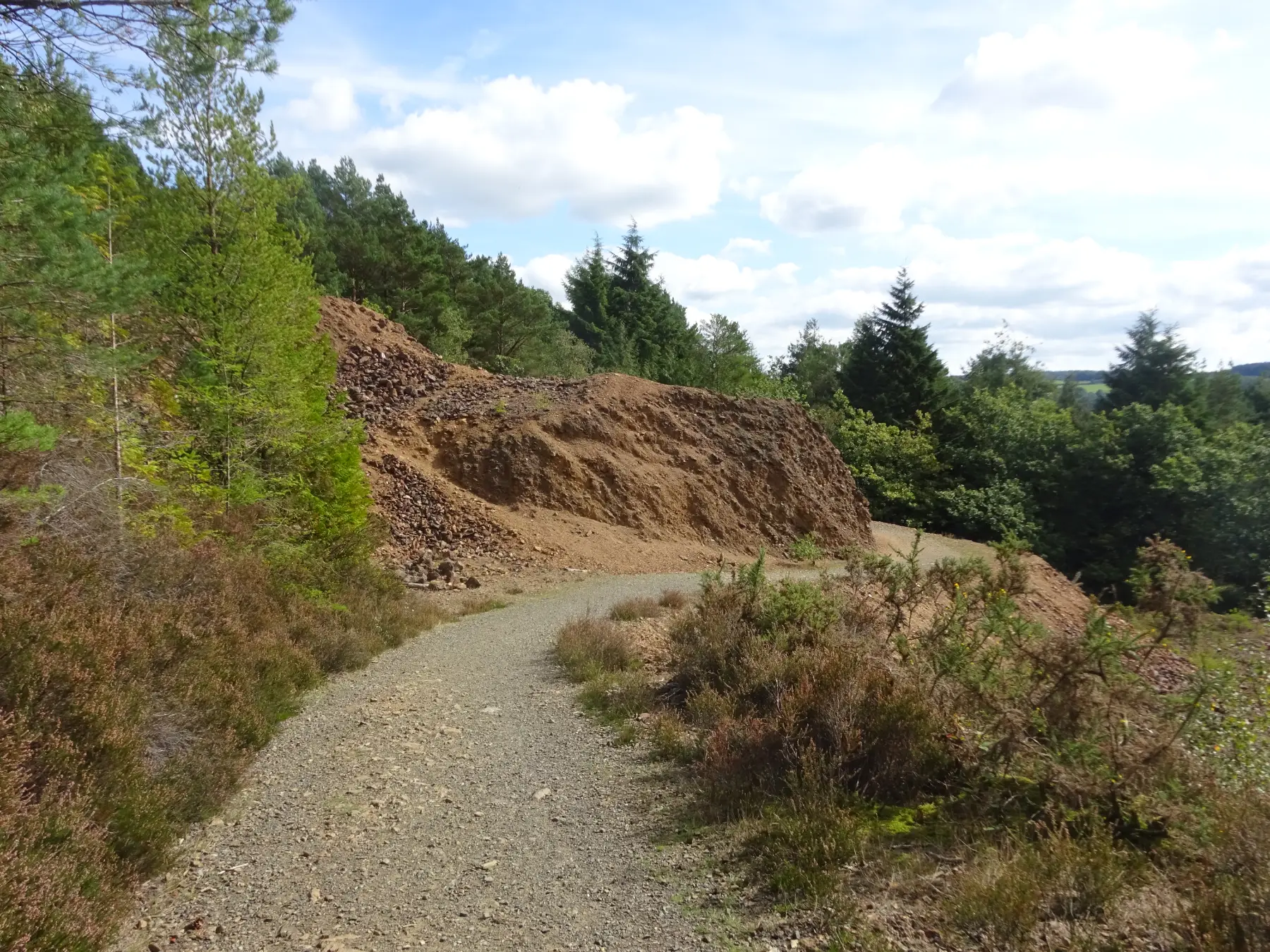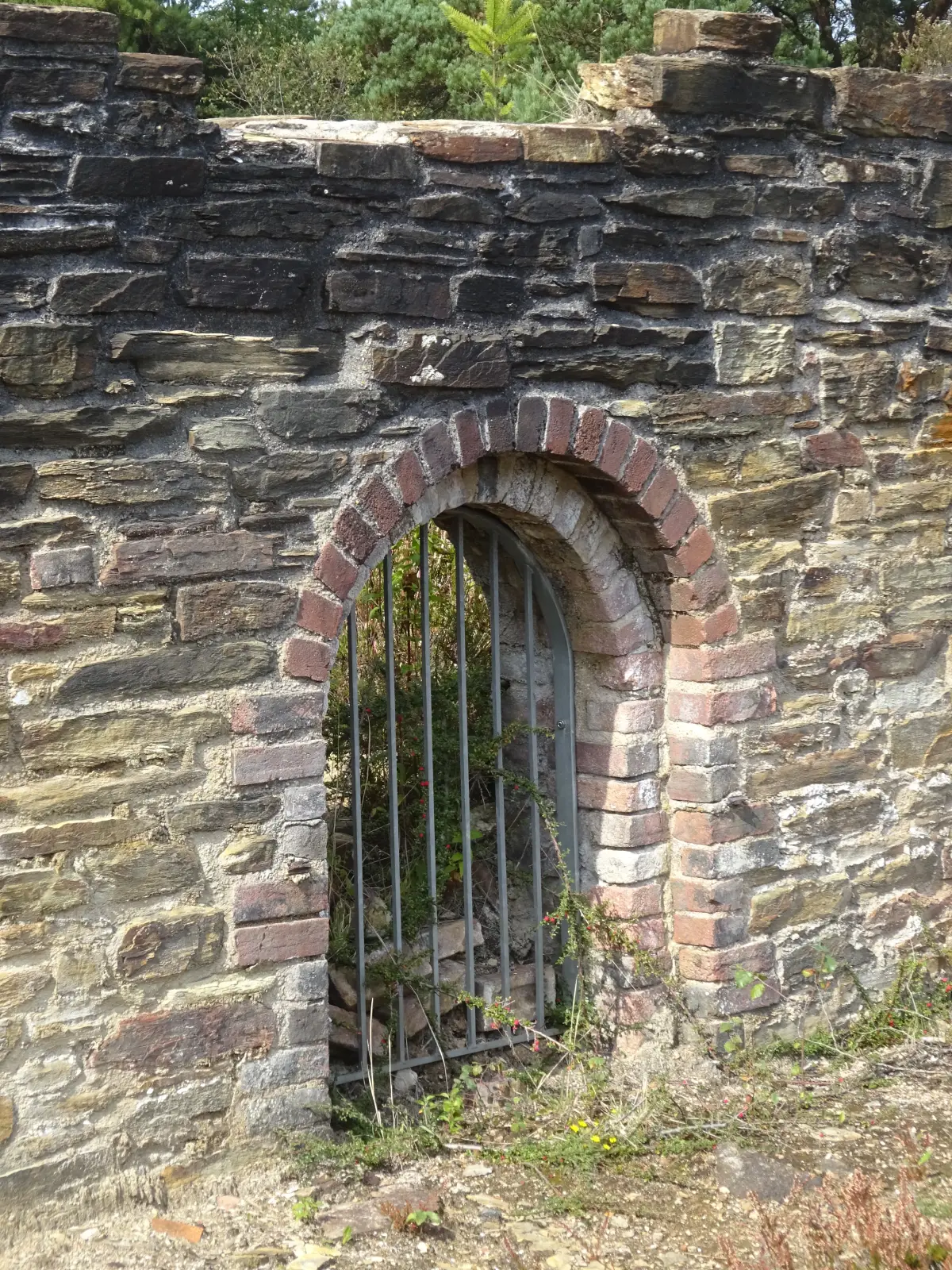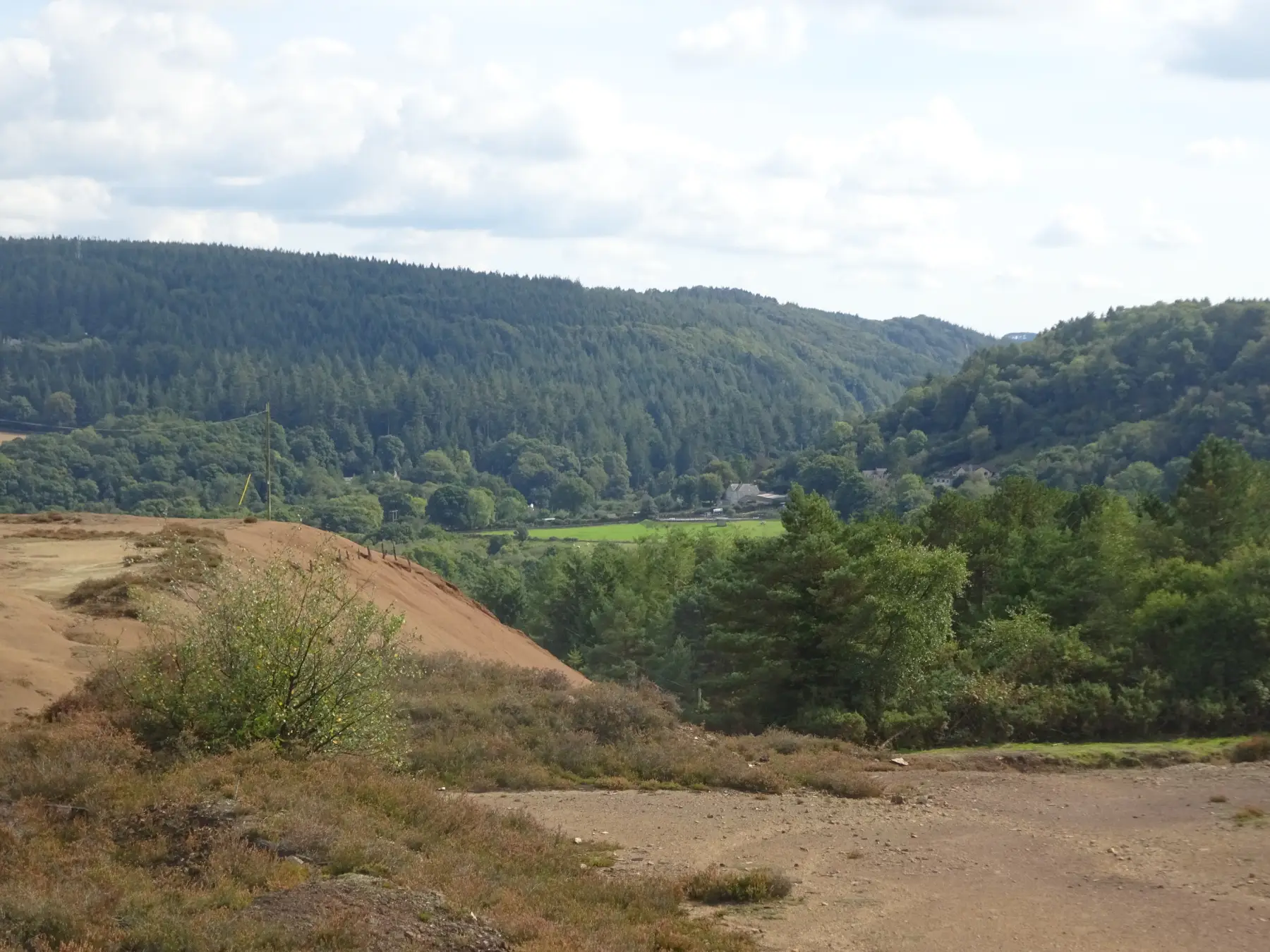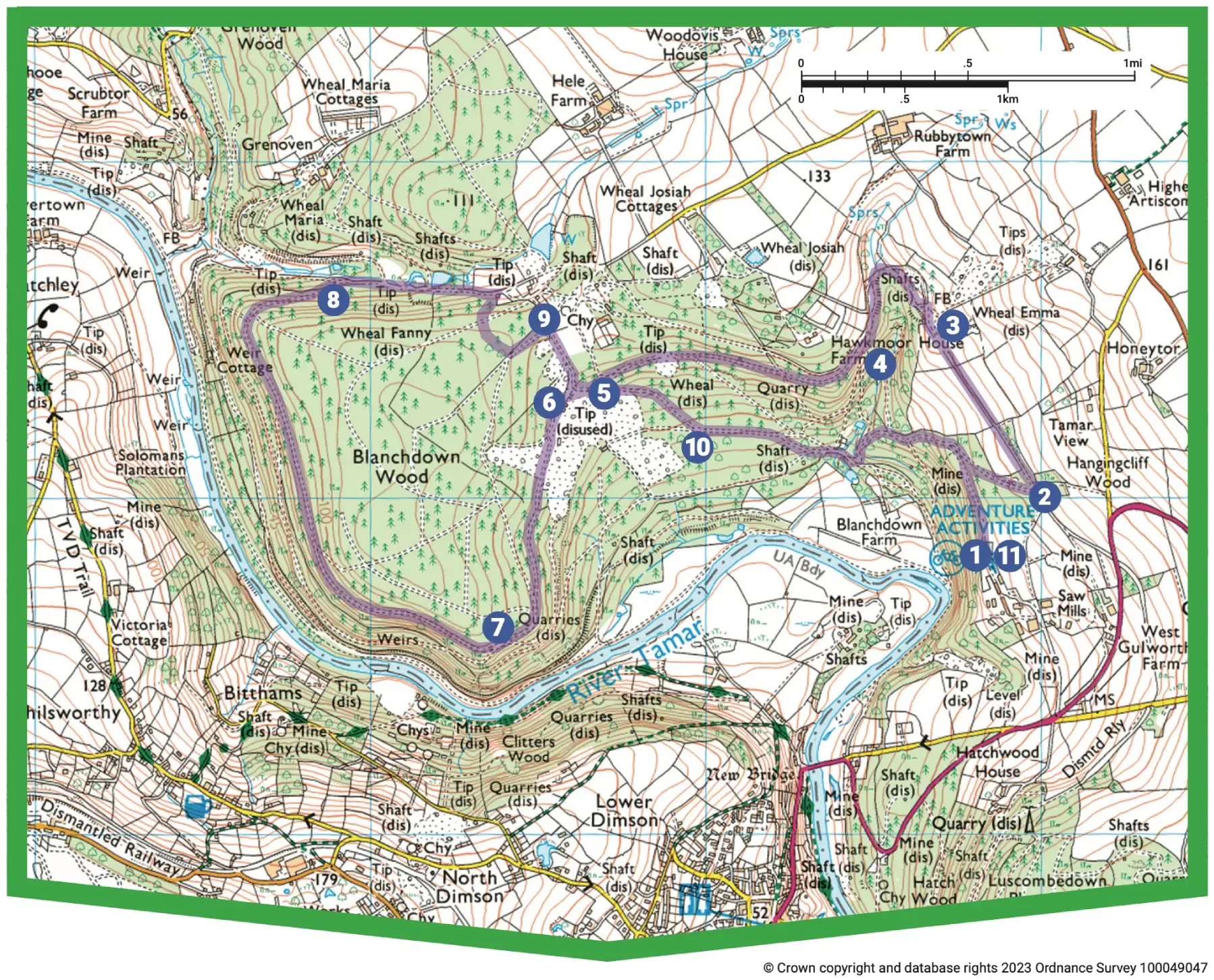Keep straight on, downhill, passing Wheal Frementor’s large fenced ‘gunnis’, where tin and tungsten were mined. The path descends steeply. Out of sight down the valley side here is the 14¾ft- (4.5m-) wide Great Leat, which carried water from the Tamar to feed giant waterwheels near Point 10.
This lovely path heads upstream, high above the river. Some of the trees have been cleared to create suitable habitat for the rare heath fritillary butterfly; across the river (hidden by the trees) is Gunnislake Clitters Mine. After a long, steady ascent the track starts to descend and eventually curves right, away from the river, and continues downhill. The western end of the copper lode is in this part of the site.

